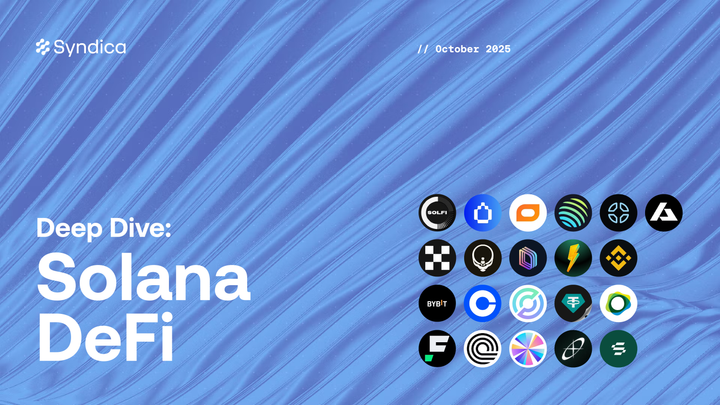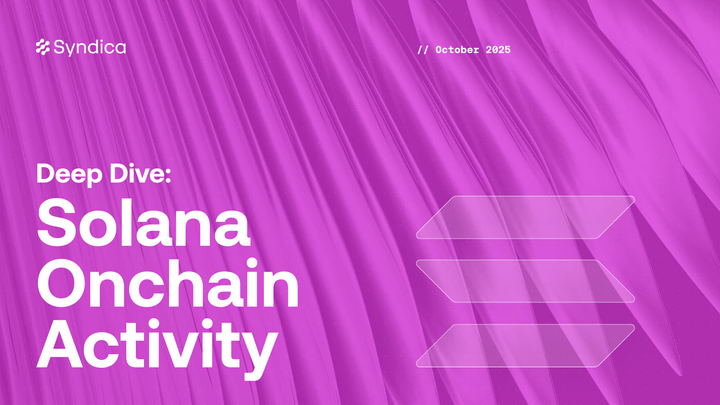Deep Dive: Solana DePIN - December 2024
Deep Dive: Solana DePIN - December 2024
























Note: Below is the text-accessible version of this post for visually impaired readers.
Syndica Deep Dive: Solana DePIN - December 2024
DePIN protocols reached $1M in monthly revenue for the first time. Combined monthly revenues from Helium, Hivemapper, and Render grew 5x since June. Hivemapper led the charge with an impressive 1,139% revenue growth during this period.
Contributor growth has been correlated among DePIN protocols. Helium, Hivemapper, and Nosana each saw a decline in contributor growth up to Q4 before rebounding to end the year. Contributors may be following broader market conditions irrespective of the protocol.
In many DePIN protocols, contributor rewards slightly increased in December. The average rewards per contributor in each DePIN protocol increased, except for Nosana.
H2 DePIN contributors showed stronger retention than H1. Contributors who joined in Q3 and Q4 were more likely to be retained than their first-half counterparts. This could likely be due to market conditions, traction, and the lindy effect of the protocols as they grow older.
Part I: Compute, AI, and Data
Render hit $2M in 2024 revenue. December saw a record-breaking $743k in monthly revenue, tripling November. Render continues to serve as a go-to platform for artists' visual creations and is now expanding to allow AI agents to leverage its compute network.
Nosana hit 1M lifetime inferences. Active GPU operators reached an ATH in December, increasing by 73%. Nosana is set to launch mainnet on January 14.
Kuzco’s GPU supply hit an ATH. In December, the start of Epoch 2 saw a 5x increase in the number of GPUs in the network, even as hardware requirements became more stringent.
Kuzco is live. After a brief pause to the network in preparation for Epoch 2, the protocol is now serving real and live demand for inferences after testing for several months.
Part II: Mapping
Hivemapper demand surged 6x year-over-year. December saw $HONEY token burns increase by 38%, reaching an all-time high in demand. Additional catalysts are on the horizon: a Map Improvement Proposal raising map credit prices will take effect on January 1, and the next-gen Hivemapper Bee dashcams are in production.
NATIX Network has expanded with steady user growth and data collected. New user numbers doubled in December and saw collected map data events increase by 28%. NATIX data holds significant potential for applications like training autonomous driving models.
NATIX reached an ATH in reward withdrawals and active contributors. The network gave 3.5x more USD in rewards to 36% more contributors.
Part III: Wireless
Data offload growth rate stabilized for Helium and XNET. Following months of rapid expansion, the monthly growth rate for data offload on both protocols has settled into consistent double-digit percentages.
Helium Mobile demand tripled in 2024. December marked new all-time highs for data credits burned and data transferred, pushing the mobile network's demand past $200k.
Helium Mobile's carrier offloading saw non-stop growth since June. Since June, the average offload subscriber count and data offloaded have reached new all-time highs, hitting 274k subscribers and 6.1TB of data.
XNET offload data set an ATH in December.
XNET burns $18.5M in tokens in the latest epoch. With a total of $106M worth of $XNET tokens burned, the ongoing burn cycle reflects sustained and growing usage of the network.
XNET rewards rose by 68% in latest epoch. Despite active contributors stabilizing, the growth in $XNET rewards signals increased network value and contributor incentives.
Roam new WiFi setups surged 2.3x in December to a new ATH. Cumulative setups surpassed 1M as new registered users grew by 292k. The surge in WiFi setups is likely driven by the launch of Roam Growth, an initiative offering sustainable income for hardware owners.
Part IV: Energy
Srcful saw exceptional growth in December. Installed gateways surged by 55%, while power production reversed its downtrend, climbing by 83%, marking a standout month for the protocol.



